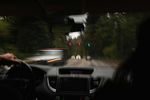-
Data: 2020-10-08 11:58:25
Temat: Re: Bootloader
Od: trybun <M...@j...cb> szukaj wiadomości tego autora
[ pokaż wszystkie nagłówki ]W dniu 07.10.2020 o 01:13, Eneuel Leszek Ciszewski pisze:
>
> "Eneuel Leszek Ciszewski" 5f7cf767$0$17351$6...@n...neostrada.pl
>
>
>> Możesz użyć (tekstowego) BCDEdit -- ale (graficzny) EasyBCD jest
>> prostszy...
>
> Możesz uruchomić PowerShell (prawy myszy na znak Win) i spod niej
> uruchomić
> tekstowy BCDEdit, by zobaczyć to i owo z BCD. Wygląda to tak sobie pod
> względem
> czytelności, gdy chcemy tu coś modyfikować:
>
>
>
>
>
> Windows PowerShell
> Copyright (C) Microsoft Corporation. All rights reserved.
>
> Try the new cross-platform PowerShell https://aka.ms/pscore6
>
> PS C:\Windows\system32> bcdedit
>
> Windows Boot Manager
> --------------------
> identifier {bootmgr}
> device partition=\Device\HarddiskVolume9
> description Windows Boot Manager
> locale pl-PL
> inherit {globalsettings}
> default {default}
> resumeobject {76ad73b0-04e6-11eb-9467-806e6f6e6963}
> displayorder {09e32fc4-068b-11eb-9428-54ab3ae19492}
> {b206a301-2f2e-11e9-93ea-54ab3ae19492}
> {current}
> {cb00ead4-0433-11eb-9465-54ab3ae19492}
> {default}
> toolsdisplayorder {memdiag}
> timeout 10
>
> Windows Boot Loader
> -------------------
> identifier {09e32fc4-068b-11eb-9428-54ab3ae19492}
> device partition=\Device\HarddiskVolume10
> path \Windows\system32\winload.exe
> description Evo_0 201004
> locale pl-PL
> osdevice partition=\Device\HarddiskVolume10
> systemroot \Windows
> resumeobject {ed84712b-068c-11eb-946b-806e6f6e6963}
>
> Windows Boot Loader
> -------------------
> identifier {b206a301-2f2e-11e9-93ea-54ab3ae19492}
> device partition=\Device\HarddiskVolume11
> path \Windows\system32\winload.exe
> description Start z S Evo1
> locale en-US
> osdevice partition=\Device\HarddiskVolume11
> systemroot \Windows
> resumeobject {ff048c9e-2f2e-11e9-93ee-806e6f6e6963}
> bootmenupolicy Standard
>
> Windows Boot Loader
> -------------------
> identifier {current}
> device partition=C:
> path \Windows\system32\winload.exe
> description 0_SSHD_CiemnoMietowy
> locale pl-PL
> osdevice partition=C:
> systemroot \Windows
> resumeobject {76ad73b0-04e6-11eb-9467-806e6f6e6963}
> bootmenupolicy Standard
>
> Windows Boot Loader
> -------------------
> identifier {cb00ead4-0433-11eb-9465-54ab3ae19492}
> device unknown
> path \Windows\system32\winload.exe
> description 0_HDD_Black
> locale pl-PL
> osdevice unknown
> systemroot \Windows
> resumeobject {03426811-0686-11eb-9428-806e6f6e6963}
> bootmenupolicy Standard
>
> Real-mode Boot Sector
> ---------------------
> identifier {default}
> device boot
> path \NST\AutoNeoGrub0.mbr
> description EasyBCD BIOS Extender
> locale pl-PL
> custom:250000c2 1
>
>
>
>
>
>
>
>
> To tylko kilka wpisów. Teraz pomyśl co będzie, gdy na każdym dysku
> (z trzech: SSD, SSHD i HDD) mam po kilka (3 lub 4) partycji podstawowych
> a na każdej z nich mam BCD z wpisami i W10, i różnych obrazków...
>
> BCDEdit jest mniej komfortowy niż EasyBCD, a chyba też mniej użyteczny,
> choć BCDEdit jest rodzimym produktem a EasyBCD jest programem
> zewnętrznym...
>
>
>
> W EasyBCD wszystko widać bez manuali.
>
> Podstawowa pomoc BCDEdit wygląda tak:
>
>
> PS C:\Windows\system32> BCDEdit /?
>
> BCDEDIT - Boot Configuration Data Store Editor
>
> The Bcdedit.exe command-line tool modifies the boot configuration data
> store.
> The boot configuration data store contains boot configuration
> parameters and
> controls how the operating system is booted. These parameters were
> previously
> in the Boot.ini file (in BIOS-based operating systems) or in the
> nonvolatile
> RAM entries (in Extensible Firmware Interface-based operating
> systems). You can
> use Bcdedit.exe to add, delete, edit, and append entries in the boot
> configuration data store.
>
> For detailed command and option information, type bcdedit.exe /?
> <command>. For
> example, to display detailed information about the /createstore
> command, type:
>
> bcdedit.exe /? /createstore
>
> For an alphabetical list of topics in this help file, run "bcdedit /?
> TOPICS".
>
> Commands that operate on a store
> ================================
> /store Used to specify a BCD store other than the current
> system default.
> /createstore Creates a new and empty boot configuration data store.
> /export Exports the contents of the system store to a file.
> This file
> can be used later to restore the state of the system
> store.
> /import Restores the state of the system store using a backup
> file
> created with the /export command.
> /sysstore Sets the system store device (only affects EFI
> systems, does
> not persist across reboots, and is only used in cases
> where
> the system store device is ambiguous).
>
> Commands that operate on entries in a store
> ===========================================
> /copy Makes copies of entries in the store.
> /create Creates new entries in the store.
> /delete Deletes entries from the store.
> /mirror Creates mirror of entries in the store.
>
> Run bcdedit /? ID for information about identifiers used by these
> commands.
>
> Commands that operate on entry options
> ======================================
> /deletevalue Deletes entry options from the store.
> /set Sets entry option values in the store.
>
> Run bcdedit /? TYPES for a list of datatypes used by these commands.
> Run bcdedit /? FORMATS for a list of valid data formats.
>
> Commands that control output
> ============================
> /enum Lists entries in the store.
> /v Command-line option that displays entry identifiers in
> full,
> rather than using names for well-known identifiers.
> Use /v by itself as a command to display entry identifiers
> in full for the ACTIVE type.
>
> Running "bcdedit" by itself is equivalent to running "bcdedit /enum
> ACTIVE".
>
> Commands that control the boot manager
> ======================================
> /bootsequence Sets the one-time boot sequence for the boot manager.
> /default Sets the default entry that the boot manager will use.
> /displayorder Sets the order in which the boot manager displays the
> multiboot menu.
> /timeout Sets the boot manager time-out value.
> /toolsdisplayorder Sets the order in which the boot manager displays
> the tools menu.
>
> Commands that control Emergency Management Services for a boot
> application
> ====================================================
======================
>
> /bootems Enables or disables Emergency Management Services
> for a boot application.
> /ems Enables or disables Emergency Management Services for an
> operating system entry.
> /emssettings Sets the global Emergency Management Services parameters.
>
> Command that control debugging
> ==============================
> /bootdebug Enables or disables boot debugging for a boot
> application.
> /dbgsettings Sets the global debugger parameters.
> /debug Enables or disables kernel debugging for an operating
> system
> entry.
> /hypervisorsettings Sets the hypervisor parameters.
>
> Command that control remote event logging
> =========================================
> /eventsettings Sets the global remote event logging parameters.
> /event Enables or disables remote event logging for an operating
> system entry.
>
> PS C:\Windows\system32>
>
>
>
>
> Jak widać -- BCDEdit zezwala na to i owo, ale EasyBCD jest łatwiejszy...
>
Tak przeglądam te opcje ale nie widzę sekcji w której można by zmienić
tryb BCD z graficznego na tekstowy..
Następne wpisy z tego wątku
- 08.10.20 11:58 trybun
- 08.10.20 12:14 heby
- 08.10.20 13:22 Adam
- 08.10.20 13:31 heby
- 08.10.20 15:55 Adam
- 09.10.20 03:11 Eneuel Leszek Ciszewski
- 14.10.20 16:03 pioruns
- 15.10.20 15:30 dantes
- 16.10.20 18:56 heby
Najnowsze wątki z tej grupy
- Laptop z miejscem na dwa dyski i 32 GiB DDR4
- Domowy switch 1GBit/8 portów, ale lepszy niż najtańsze
- Disk on Module, czym to odczytać?
- kupiłem pendrajwa 256gb
- Atra_ment Canona GI-41 vs 45 itp...
- Android na wirtualnej maszynie
- A digital dark age? The people rescuing forgotten knowledge trapped on old floppy disks
- Awaria
- monitor vs tv
- Dużo niższe temperatury procesora po obudzeniu komputera... tak ma być czy jest coś nie tak?
- Plaskaty uchwyt VESA 100x100 na sciane?
- klawiatura podświetlana zasilana z sieci
- Upgrade z i7-6xxx
- Mały komputer potrzebny.
- John Carmack twierdzi, że gdyby gry były optymalizowane, to wystarczyły by stare kompy
Najnowsze wątki
- 2025-12-12 Warszawa => Przedstawiciel handlowy / KAM (branża TSL) <=
- 2025-12-12 Warszawa => Architekt rozwiązań (Workday) - Legal Systems <=
- 2025-12-12 Warszawa => Dynamics 365 Commerce/POS Developer <=
- 2025-12-12 Wrocław => React Developer with knowledge of C++ <=
- 2025-12-12 Białystok => Programista React ze znajomością C++ <=
- 2025-12-12 Warszawa => Microsoft Dynamics 365 Finance Consultant <=
- 2025-12-11 To już efekt Żurka czy coś jeszcze GORSZEGO?
- 2025-12-11 Policjanci w mieście Łodzi zmierzą ci prędkość z błędem mniejszym niż producent w laboratorium :-)
- 2025-12-11 Warszawa => Senior Java Developer <=
- 2025-12-11 Kolejny prezent
- 2025-12-10 hameryka
- 2025-12-10 Tak im zależy na wlasnym kraju. :-(
- 2025-12-10 Czy "hipoteka przymusowa" podpada (powinna podpadać) pod ochronę immunitetem poselskim? [Ziobro]
- 2025-12-10 Żurek po raz kolejny wykazał jaki poziom reprezentuje
- 2025-12-10 Gdańsk => Microsoft Dynamics AX/365 SCM Consultant - Service & Suppor




![Jak przygotować skuteczną kreację do mailingu. 7 praktycznych porad [© dizain - Fotolia.com] Jak przygotować skuteczną kreację do mailingu. 7 praktycznych porad](https://s3.egospodarka.pl/grafika2/mailing/Jak-przygotowac-skuteczna-kreacje-do-mailingu-7-praktycznych-porad-219161-150x100crop.jpg)
![Ranking chwilówek i pożyczek pozabankowych [© Karolina Chaberek - Fotolia.com] Ranking chwilówek i pożyczek pozabankowych](https://s3.egospodarka.pl/grafika2/pozyczki-pozabankowe/Ranking-chwilowek-i-pozyczek-pozabankowych-216055-150x100crop.jpg)
![Jak temat maila wpływa na open rate i skuteczność mailingu? [© thodonal - Fotolia.com] Jak temat maila wpływa na open rate i skuteczność mailingu?](https://s3.egospodarka.pl/grafika2/mailing/Jak-temat-maila-wplywa-na-open-rate-i-skutecznosc-mailingu-216671-150x100crop.jpg)

![2035 rok coraz mniej realny? Europa traci tempo w wyścigu o elektromobilność [© pexels] 2035 rok coraz mniej realny? Europa traci tempo w wyścigu o elektromobilność [© pexels]](https://s3.egospodarka.pl/grafika2/elektromobilnosc/2035-rok-coraz-mniej-realny-Europa-traci-tempo-w-wyscigu-o-elektromobilnosc-269448-50x33crop.jpg) 2035 rok coraz mniej realny? Europa traci tempo w wyścigu o elektromobilność
2035 rok coraz mniej realny? Europa traci tempo w wyścigu o elektromobilność



![Nota korygująca odchodzi do historii. Jak poprawić błąd w fakturze w KSeF? [© wygenerowane przez AI] Nota korygująca odchodzi do historii. Jak poprawić błąd w fakturze w KSeF?](https://s3.egospodarka.pl/grafika2/nota-korygujaca/Nota-korygujaca-odchodzi-do-historii-Jak-poprawic-blad-w-fakturze-w-KSeF-270023-150x100crop.jpg)
![Czy prezenty świąteczne od pracodawcy podlegają opodatkowaniu? Sprawdź, kiedy trzeba płacić podatek [© wygenerowane przez AI] Czy prezenty świąteczne od pracodawcy podlegają opodatkowaniu? Sprawdź, kiedy trzeba płacić podatek](https://s3.egospodarka.pl/grafika2/prezenty-swiateczne/Czy-prezenty-swiateczne-od-pracodawcy-podlegaja-opodatkowaniu-Sprawdz-kiedy-trzeba-placic-podatek-270028-150x100crop.jpg)
![Samochód na firmę 2025 vs 2026: jak uniknąć wyższych podatków? [© pexels] Samochód na firmę 2025 vs 2026: jak uniknąć wyższych podatków?](https://s3.egospodarka.pl/grafika2/samochod-w-leasingu/Samochod-na-firme-2025-vs-2026-jak-uniknac-wyzszych-podatkow-270022-150x100crop.jpg)
![7 pułapek i okazji - zobacz co cię czeka podczas kupna mieszkania na wynajem [© pixabay - wygenerowane przez AI] 7 pułapek i okazji - zobacz co cię czeka podczas kupna mieszkania na wynajem](https://s3.egospodarka.pl/grafika2/inwestycja-w-mieszkanie/7-pulapek-i-okazji-zobacz-co-cie-czeka-podczas-kupna-mieszkania-na-wynajem-270018-150x100crop.jpg)
![15 sposobów na legalne obniżenie podatku PIT za 2025 r., z których można skorzystać do końca grudnia [© wygenerowane przez AI] 15 sposobów na legalne obniżenie podatku PIT za 2025 r., z których można skorzystać do końca grudnia](https://s3.egospodarka.pl/grafika2/rozliczenia-roczne/15-sposobow-na-legalne-obnizenie-podatku-PIT-za-2025-r-z-ktorych-mozna-skorzystac-do-konca-grudnia-270017-150x100crop.jpg)
![5 Najlepszych Programów do Księgowości w Chmurze - Ranking i Porównanie [2025] 5 Najlepszych Programów do Księgowości w Chmurze - Ranking i Porównanie [2025]](https://s3.egospodarka.pl/grafika2//5-Najlepszych-Programow-do-Ksiegowosci-w-Chmurze-Ranking-i-Porownanie-2025-270016-150x100crop.png)
